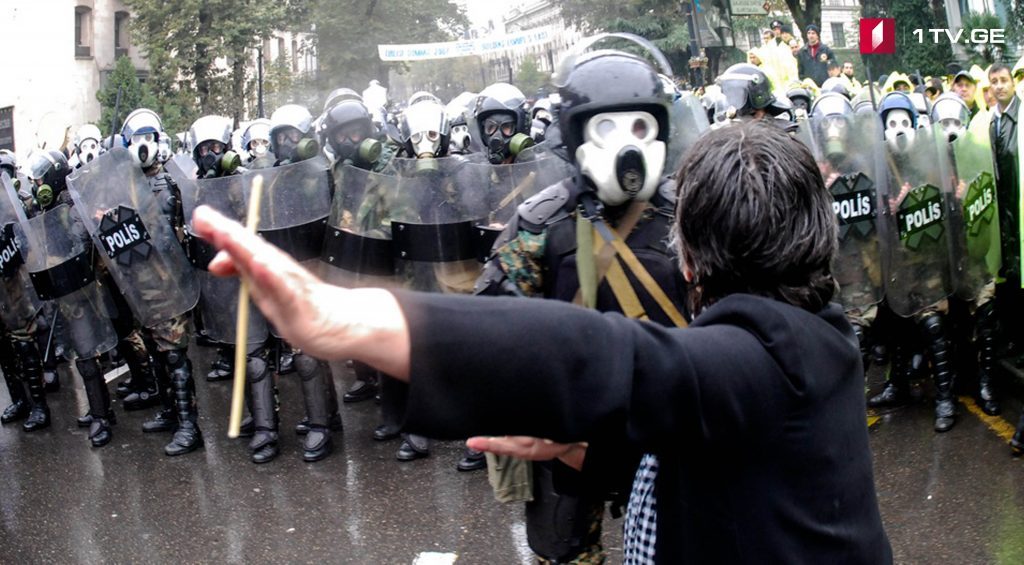Ten years passed after November 7, 2007, developments in Tbilisi and the violent crackdown of the opposition’s protest. November 7 has been a symbol of the Soviet Union for years. In the history of independent Georgia, the date is associated with violence of authoritarianism extorted on people.
Prime Minister Giorgi Kvirikashvili posted a picture of the rally dispersal on his Facebook page this afternoon with the caption that such thing will never happen again in the country. Those, who made the decision to violently disperse the demonstration 10 years ago, and victims too, today all agree that November 7 was a mistake, a learnt lesson that must not be repeated.
The police dispersed the protest with use of tear gas, rubber bullets and water cannon. Special task force intruded into “Imedi” TV Company later that day and shut down the broadcaster. A total of 508 people were taken to hospital when riot police dispersed thousands of protesters in various parts of capital Tbilisi.
When photos of the rally dispersal spread around the world, the international society criticized former president Mikheil Saakashvili’s government for using heavy-handed tactics against protesters. They evaluated November 2007 as the worst political crisis in Georgia since the Rose Revolution in 2003.
Saakashvili declared a 15-day emergency state on November 8 and appointed early presidential elections for 5 January 2008.
Demonstrations started on September 28, 2007. It peaked on November 2 when up to 100,000 people gathered in front of Parliament Building at central Rustaveli Avenue. Protesters urged then-president Mikheil Saakashvili to step down. The protests were organized by a coalition of major oppositional political parties.

